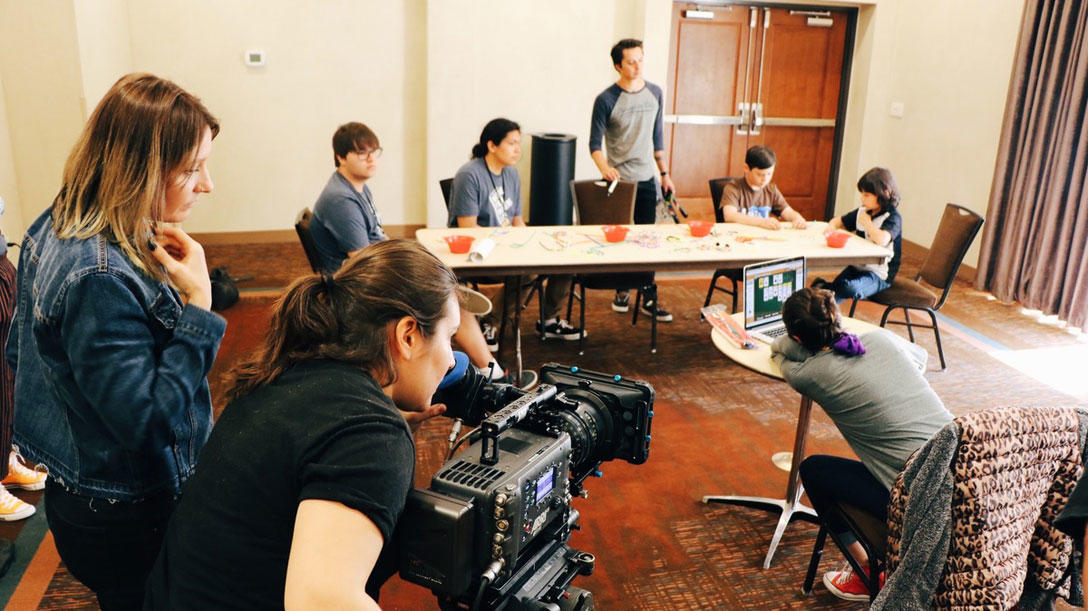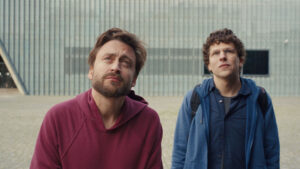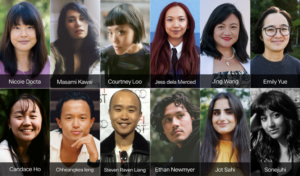Erica Tremblay (left) attends the 2018 Native Filmmakers Lab.
© 2018 Sundance Institute | Tytianna Harris
Erica Tremblay
Erica Tremblay is a documentary filmmaker and
activist who belongs to the Seneca-Cayuga Nation and is also of
Wyandotte heritage. Below she reflects on her experiences as a Native
Filmmakers Lab Fellow and an Indigenous woman filmmaker in the age of
#MeToo.
Sgę́:nǫˀ. Ǫdewayę́:staˀ niˀgyá:sǫh. Dewáhǫhde:s niwagˀesyaóˀdę:. Onǫdowáˀga:ˀ neˀ hniˀ Gayogo̲hó:nǫˀ niwagǫ̲hwę́jˀodę:. Gahnawiyoˀgeh nidwa:ge:no:. Oswe:gęˀ hǫweh agadewayę́sdohogye: Gayogo̲hó:nǫˀ.
March is Women’s History Month, a time when we celebrate the importance of women by highlighting our stories and our successes. But especially in the age of #MeToo, it can feel like the spaces for women to tell our stories are limited: a specific month, a specific hashtag. My own experience has shown me that in many Indigenous cultures, including my own, women are driving change every day and for entire communities.
I grew up in Oklahoma near my tribal Seneca-Cayuga land, raised primarily by women: my mother, my school teachers, and my mentors. I saw women work towards decolonizing our systems and structures for the betterment of this and the next generation. And what is #MeToo if not a movement in decolonization?
As storytellers, we have the opportunity to inspire people to move beyond hashtags. In 2018, women directors accounted for only 8% of the top 250 domestic grossing films, and there are no readily available statistics around how many filmmakers identify as Indigenous. Without stages for our voices and platforms for our work, how can we shift the conversation? No one else is qualified to tell our stories but us.
This reality can be a hard one to swallow. Over my career in the media industry, where I have been in roles ranging from production assistant to director, I’ve experienced my fair share of misogyny. I have had directors scream at me telling me I should stick to administrative duties, I have been hit on by my bosses, and in an especially egregious situation I was even physically dragged by a vehicle when I turned down advances.
Most recently, I received notes on a project that included an Indigenous slur. For so long, I have expected this sort of behavior as a queer, Indigenous woman. I saw no path for my own storytelling. This is exactly why Sundance Institute’s Native Filmmakers Lab is so crucial to shifting the conversation—it gets us to the table.
Last year, after years of thinking I wasn’t good enough to apply, I submitted a film to the Lab that I wrote about my mother teaching in my community in Northeastern Oklahoma. This is a film about the women of our community who are working every day—not just during one month of the year—to ensure the safety and future of our children.
When I got the call that I had been chosen for the lab, I was truly shocked. Years of being told no had taken a toll on my self-esteem. But this support has brought me out from behind my own fears and given me the confidence to fight for my voice is a real and genuine way. To be given a space to believe in yourself is the most powerful gift.
Over the last year, I have worked on my film Little Chief through the lab. From the first intensive workshops through post-production support, I have been surrounded by amazing mentors and professionals who have been at once brilliant, patient, and encouraging.
I’ve had the opportunity to meet a vibrant and growing community of Indigenous filmmakers who are also pushing the industry forward. This is also the first year in the program’s history that all of the fellows are female-identified. We embody the change that we want to see in storytelling.
As Indigenous filmmakers we span geographies, nations, backgrounds, languages, and so much more. We are modern storytellers that have valuable and important things to say. I am so thankful the Indigenous Program is providing this platform for exploration and pushing our voices to the front.




